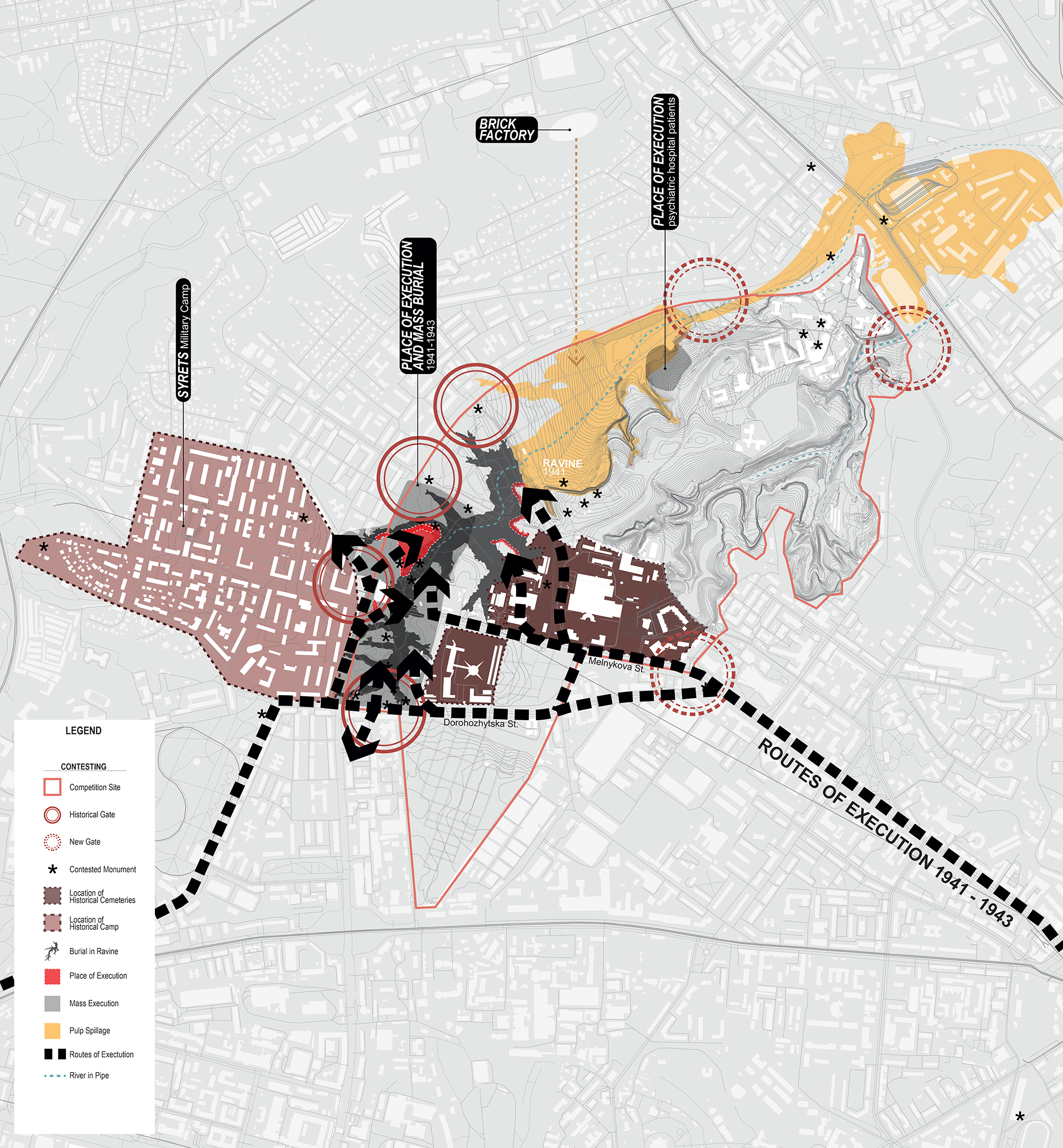
The language we propose to use to inform the design of the Babyn Yar Holocaust Memorial Center (BYHMC) is one of burial and birth (rebirth, life), made manifest through the strategic design of sacred landscapes overlayed with living forest systems. As designers and as viewers, we understand memorials through their content and symbolism, both of which must be easily understood by the memorial’s community. The way a memorial is viewed depends upon its audience’s familiarity with its visual lexicon of signs and images that translate into meaning. As communities change, shared language also changes, even sometimes becoming extinct.
A living memorial is by definition how we envision the future for the BHYMC, however, we envision a sensory experience that is exceedingly more powerful that amplifies the latent power of the landscape by reigniting the narrative of the soil in a resacralization of the ravine. The landscape of BYHMC will be evaluated and curated through five (5) approaches to the design of this sacred landscape. The production of these approaches amplifies the sacredness of the site. They operate at various scales and often overlap; Interpreting Space, Ritualizing Space, Contesting Space, Orienting Space, and Regenerating Space.









